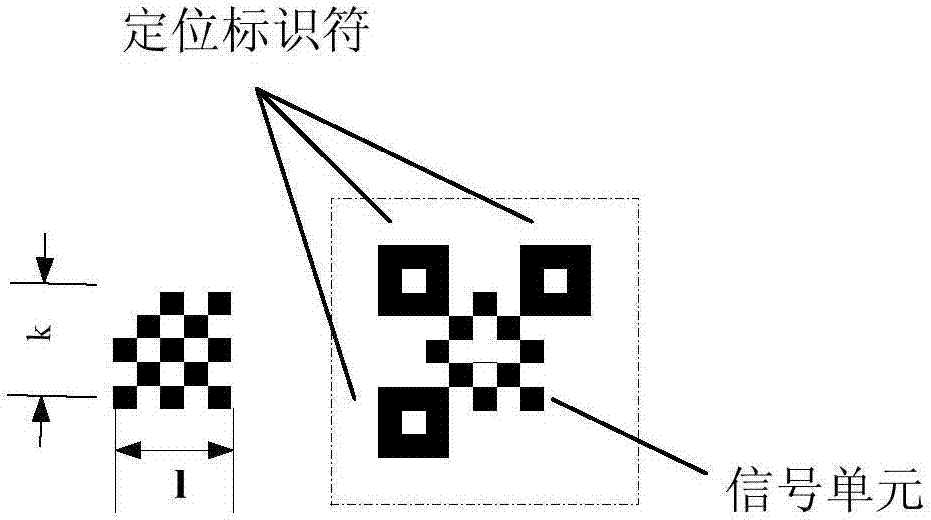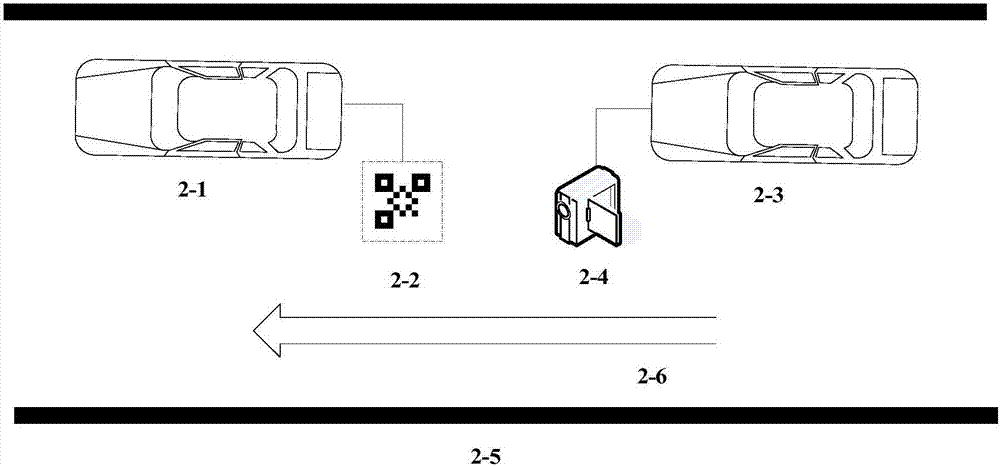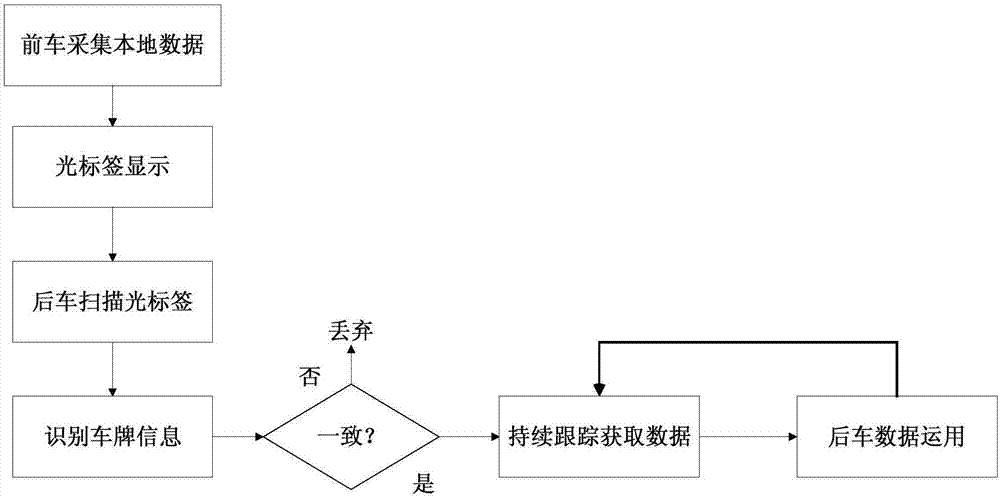Vehicle-mounted auxiliary data transmission method based on optical label
An auxiliary data transmission and optical tag technology, applied in the field of optical communication, can solve the problems of unsuitable application and expensive equipment, and achieve the effect of rich application, low equipment cost and strong channel directivity
- Summary
- Abstract
- Description
- Claims
- Application Information
AI Technical Summary
Problems solved by technology
Method used
Image
Examples
Embodiment 1
[0058] Example 1. Safe driving with in-vehicle auxiliary data transmission based on optical tags. Vehicles A and B are driving on the same road and in the same direction. Vehicle A is in front, vehicle B is behind, and vehicle B is following closely behind. Safe driving data sharing is implemented between the two based on the on-board auxiliary data transmission of optical tags. Car A encodes its current speed, engine speed, accelerator position, and steering wheel steering data into optical tag data, which is displayed on the optical tag of the parking space; Car B scans the optical tag in the front view and finds the Light tag; Car B conducts a consistency check to confirm that the light tag is the light tag of car A; by reading the data of the light tag, car B can grasp the driving parameters of car A, perform emergency braking or steering on car A, and control the driving The system responds promptly and quickly.
Embodiment 2
[0059] Example 2. Navigation information sharing based on optical tag-based in-vehicle auxiliary data transmission. Vehicles A and B are driving on the same road and in the same direction. Vehicle A is in front, vehicle B is behind, and vehicle B is following closely behind. The two vehicles share navigation information based on the on-board auxiliary data transmission based on optical tags. Car A encodes its navigation information data into optical tag data, which is displayed on the optical tag of the parking space; Car B scans the optical tag in the front view and finds the optical tag of Car A; Car B conducts a consistency check to confirm The light tag is the light tag of car A; by reading the data of the light tag, car B understands the navigation information of car A, refers to its own navigation data, and optimizes driving route planning.
Embodiment 3
[0060] Example 3. Social relationship recommendation for in-vehicle auxiliary data transmission based on optical tags. Vehicles A and B are driving on the same road and in the same direction. Vehicle A is in front, vehicle B is behind, and vehicle B is following closely behind. Social relationship recommendation is implemented between the two based on the on-board auxiliary data transmission of optical tags. The members of vehicles A and B find that the two vehicles are on the same road. In order to relieve the loneliness in the driving process, they need to establish social relationships. Car A encodes its social software user ID (WeChat, IG, etc.) into optical tag data, which is displayed on the optical tag of the parking space; Car B scans the optical tag in the front view and finds the optical tag of Car A; Car conducts a consistency check and confirms that the light tag is the light tag of car A; by reading the data of the light tag, car B obtains the social software use...
PUM
 Login to View More
Login to View More Abstract
Description
Claims
Application Information
 Login to View More
Login to View More - R&D
- Intellectual Property
- Life Sciences
- Materials
- Tech Scout
- Unparalleled Data Quality
- Higher Quality Content
- 60% Fewer Hallucinations
Browse by: Latest US Patents, China's latest patents, Technical Efficacy Thesaurus, Application Domain, Technology Topic, Popular Technical Reports.
© 2025 PatSnap. All rights reserved.Legal|Privacy policy|Modern Slavery Act Transparency Statement|Sitemap|About US| Contact US: help@patsnap.com



